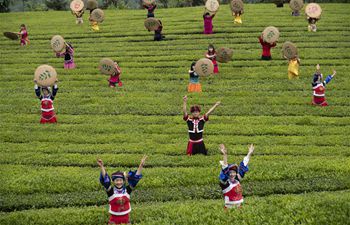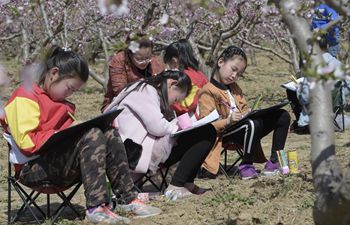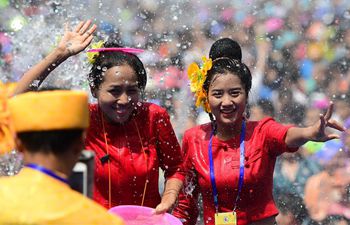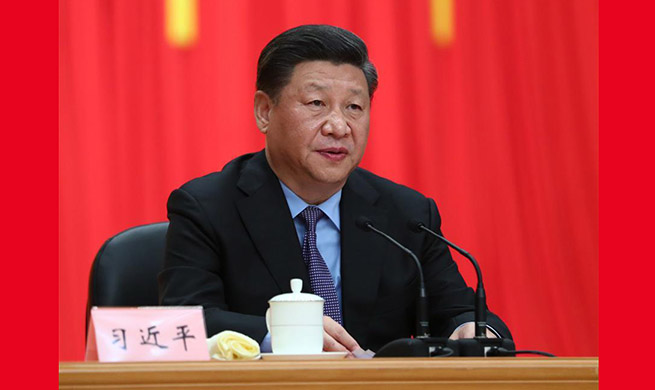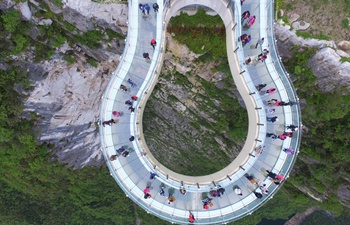by Xinhua Writer Zhang Yongxing
SUVA, April 15 (Xinhua) -- Director-general of the United Nations Food and Agriculture Organization (FAO) José Graziano da Silva has said the China-proposed Belt and Road Initiative and FAO share common goals and there exist many opportunities for the UN organization to cooperate with China under the framework.
The FAO chief made the remarks in an exclusive interview with Xinhua on Saturday on the sidelines of the 34th FAO Session of the Regional Conference for Asia and the Pacific held on the Denarau island near Fiji's third largest city of Nadi.
"Last year China's Ministry of Agriculture and Rural Affairs issued its strategy paper for supporting the BRI (Belt and Road Initiative) which noted that BRI countries share the goal 'to fight hunger, eradicate poverty, and achieve food and nutrition security.' These objectives are both at the core of the BRI and FAO's mandate," said Graziano da Silva.
"Given these common goals of the BRI and FAO, it is clear that there should be many opportunities for FAO to collaborate with China, the ministry of agriculture, national research institutions and other countries on the implementation of the BRI," the FAO chief said.
The Belt and Road Initiative, proposed by China in 2013, aims to build trade and infrastructure networks connecting Asia with Europe and Africa along the ancient Silk Road trade routes to seek common development and prosperity.
Graziano da Silva said the FAO has developed a Belt and Road Initiative umbrella program and identified four specific technical areas for working together, namely inclusive and sustainable food system development; bringing innovation to the field through digital-agriculture; enhancing the control of transboundary animal and plant diseases; as well as protecting biodiversity and improving resilience to climate change.
He said improved infrastructure will facilitate access to new and more distant markets. Farmers will be able to reduce input and transportation costs, reach further markets in a shorter time and gain access to information, technical services and advice that will enhance higher quality of products and improve productivity.
However, the extent to which these opportunities reach the most vulnerable depends on the capacity of governments to deliver services, policies and regulations governing investments in place in the hosting countries.
If these new opportunities are going to be developed in an inclusive, pro-poor way, benefiting the local communities, attention must be given to developing the entire food system and not simply the production side, he said.
The FAO chief said the Belt and Road Initiative will open new possibilities for the development of digital-agriculture innovations, or the use of information and communication technologies to improve the efficiency and effectiveness of agricultural production.
"By providing remote areas with improved access to information, digital-agriculture can reduce or overcome many of the constraints that contribute to poverty," he said.
"Digital-agriculture includes providing access to information on plant and animal diseases, production techniques, quality standards, specialist advice, access to financial services and training. This creates the opportunity for farmers to leap-frog on the path of technical development, as they can immediately start using the newest technology," he said, adding that "achieving inclusive, pro-poor outcomes with e-agriculture must be deliberately designed into the programmes from the outset."
From his point of view, the increased international trade in agricultural products that the Belt and Road Initiative will bring about, comes with increased risks of spreading animal and plant diseases between countries.
FAO has extensive global experience in the area, ensuring that expanded trade is carried out in a safe way and does not pose a threat to vulnerable farmers, nor a health threat to consumers, he said.
"The Chinese ministry of agriculture and the FAO have been key partners in this area and have been working closely together for many years," according to him.
As for climate change, he said many of the countries engaged in the Belt and Road Initiative and particularly those in Southeast Asia and Central Asia, are among the most vulnerable to the impacts of climate change, and the poor are generally the most vulnerable.
He said there is a high degree of complementarity between climate change and the other sectors proposed for action under the program of FAO/China collaboration.
Climate change must be taken into account when assessing opportunities for value chain development; innovative applications of the information and communication technologies (ICTs) and e-agriculture can be devised to improve resilience to climate change, and the implications of climate change for the spread of disease is well recognized, he noted.
With regard to the cooperation between FAO and China over the past decades, Graziano da Silva said over the past four decades, FAO and China have enjoyed a solid partnership covering a large number of the country's priority areas for food and agricultural development, including innovative intensification of agricultural production, revitalization of ecosystem and biodiversity, global health and poverty reduction through increased agricultural production.
For the period 2016 to 2020, FAO and China have entered into a new era of collaboration by signing a Memorandum of Understanding for the establishment of a strategic cooperation and comprehensive partnership that will foster innovation, synergies and complementarities in the realization of national development goals, according to the director-general.
"The establishment of the strategic partnership responds to a changing trend from one-way development assistance from FAO to China, to a two-way collaboration highlighting and sharing China's experience in agriculture development and food security," he said.
"FAO will still be active in providing cutting-edge policy advice, and technical assistance on food security and safety, sustainable agricultural development, management of natural resources, surveillance and control of transboundary animal and plant diseases. At the same time, China is increasingly becoming a key partner of FAO in promoting South-South Cooperation to help improve the capacity for sustainable agriculture development in other developing countries," said the FAO chief.






